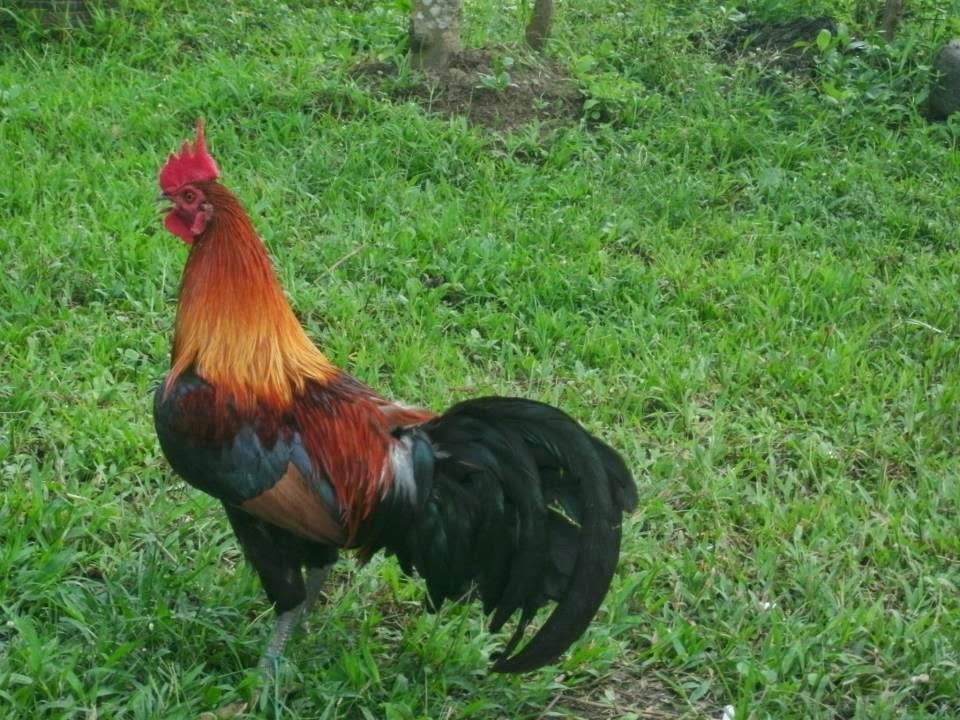As a poultry farmer and chicken enthusiast, I often get asked what a daddy chicken is called. While “daddy chicken” is used casually, the proper term for a mature male chicken is a rooster. In this article, I’ll provide a comprehensive overview of rooster terminology, characteristics, and behavior.
Defining the Key Terms
First, let’s clarify the key terms used to describe male chickens:
- Rooster – The standard name for an adult male chicken. This term specifically refers to males of the domestic chicken species.
Identifying Key Rooster Traits
Roosters have some very distinctive physical and behavioral characteristics that set them apart from hens:
- Bright plumage – Roosters sport more vibrant, colorful feathers than hens, often with long arched tails. The feathers can shimmer with iridescent hues.
- Prominent comb/wattles – The red fleshy protrusions on a rooster’s head and neck are larger than those of a hen.
- Leg spurs – Roosters possess pointy spurs on their legs that help them establish dominance
- Crowing They crow to defend territory and attract hens.
- Aggression/dominance – Roosters are assertive and will fight with other males to establish hierarchy.
- Mating display – Roosters perform a courtship “dance” around hens to signal their desire to mate.
Key Roles and Behaviors
Beyond their flashy appearance, roosters play some important functional roles in a flock:
- Fertilizing eggs – Obviously essential for breeding and expanding the flock through new chicks!
- Protecting the flock – Roosters are vigilant and will confront predators to keep hens safe.
- Maintaining order – The rooster determines the flock’s pecking order and prevents infighting.
- Teaching chicks – Roosters show chicks how to forage for food once they hatch.
However, roosters can also exhibit some troublesome behaviors:
- Aggression towards humans – Some roosters constantly attack and spur people, making them dangerous to handle.
- Excessive crowing – When a rooster crows hundreds of times a day, it quickly becomes a nuisance complaint.
- Over-mating hens – Too much mating activity can injure hens and stress them out.
Distinguishing Roosters from Hens
Figuring out whether a chicken is a rooster or hen can be tricky at first. Here are some identification tips:
As Chicks
- Feather sexing – Some breeds have distinctive down feather patterns that indicate gender.
- Growth rate – Rooster chicks tend to develop slightly faster than pullets (young hens).
As Adults
- Comb/wattles – As mentioned earlier, roosters develop much larger and brighter combs and wattles.
- Tail feathers – A rooster’s long, arched saddle feathers are unmistakable.
- Crowing – Once they reach 4-6 months old, roosters begin to crow frequently.
- Behavior – Rooster behavior becomes more aggressive, territorial, and focused on mating.
Ideal Rooster-to-Hen Ratios
When keeping backyard chickens, it’s important to maintain the right rooster-to-hen ratio in order to prevent issues:
- 8-12 hens per rooster is ideal – This prevents over-mating of hens and allows the rooster to effectively fertilize eggs.
- Too few hens causes stress on hens and increased aggression between roosters.
- Too many hens means the rooster can’t mate enough to fertilize all eggs.
- Too many roosters leads to brutal fighting and injured hens. It’s chaos!
Frequently Asked Questions
Here are answers to some other common rooster FAQs:
Q: How often do roosters crow?
A: Roosters crow frequently starting early in the morning, but can crow sporadically throughout the day as well. The more roosters, the more crowing!
Q: Do I need a rooster for hens to lay eggs?
A: Nope! Hens will lay eggs regardless of whether a rooster is present. The rooster just fertilizes them.
Q: How long do roosters live?
A: Average lifespan is 5-10 years, but they can live longer (up to 15 years) with proper care and breed. Larger rooster breeds tend to live shorter lives.
Q: What does a rooster’s mating “dance” signify?
A: It’s a courtship display! The rooster circles a hen while fluffing feathers to signal his intent to mate.
Q: Are some roosters more aggressive than others?
A: Yes, aggression levels vary between breeds. Some breeds like Cornish Cross are calmer, while others like Rhode Island Reds are feistier.
Q: Can hens lay fertilized eggs without a rooster?
A: No, the eggs won’t be fertilized or hatch without a rooster to mate with the hens. The rooster is essential.

Want to be a Chicken Daddy?
We are searching for fabulous Chicken Daddies worldwide! Fill out the application below for the chance to be featured in one of our calendars! Chicken Daddy Application Name
Thank you! Your application has been submitted. Please be advised that we cannot respond to every application. We save all applications and may revisit them months or years later. Thank you for your patience 😉

“This is the best thing I’ve ever seen. I’m going to be purchasing the Chicken Daddies calendar every year!”
— Haley [Etsy Purchase]
